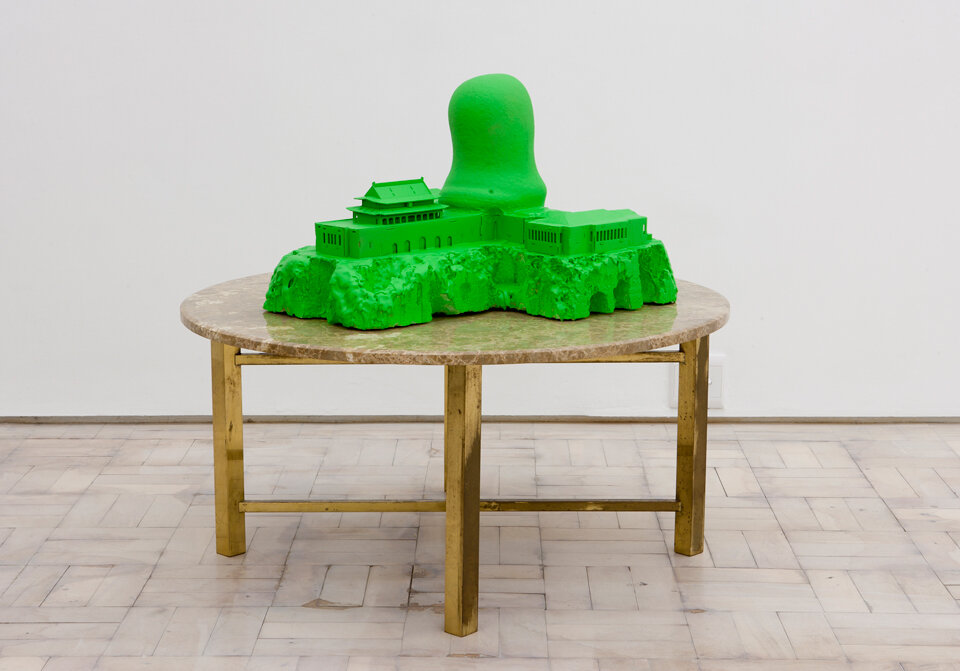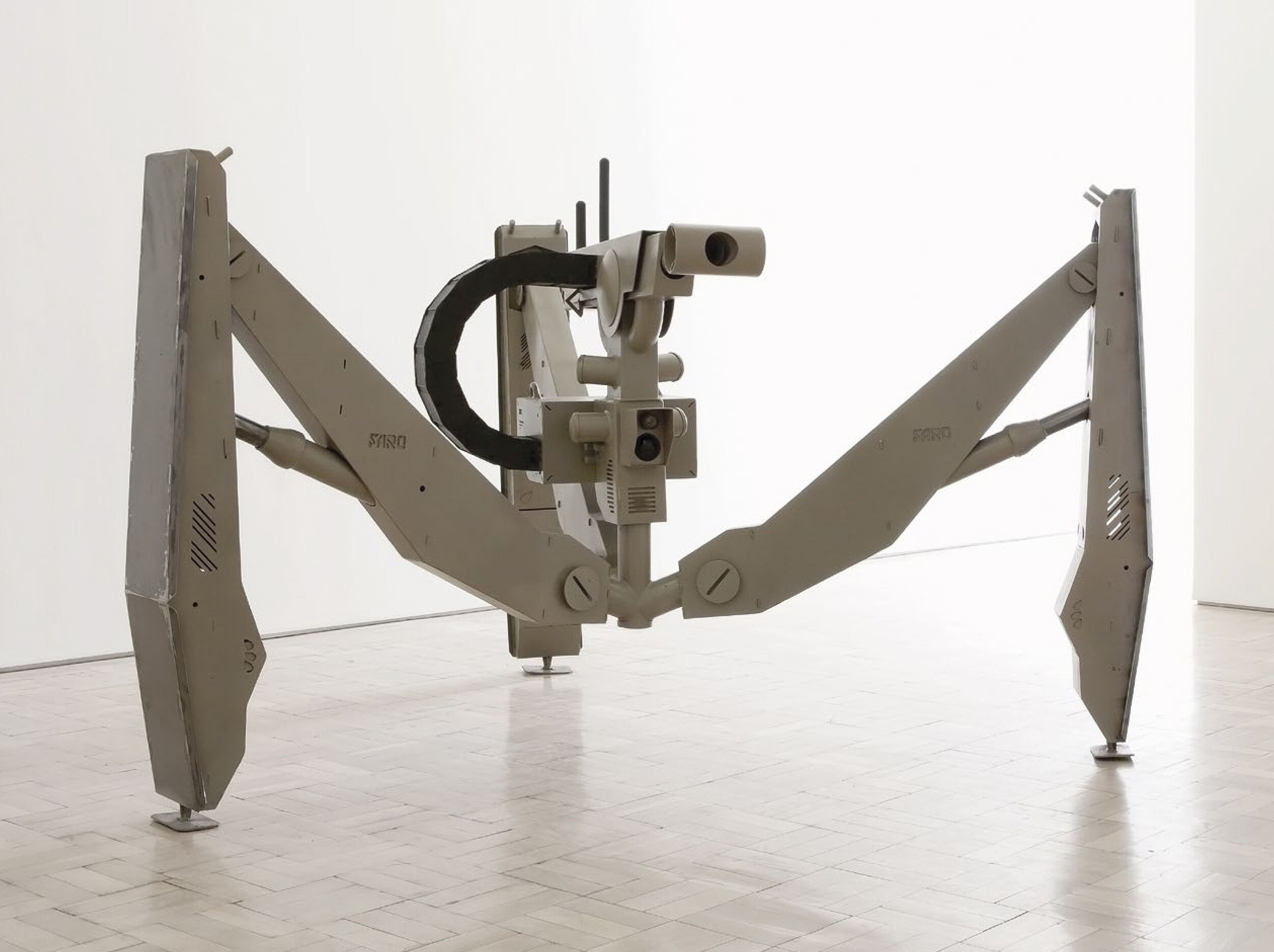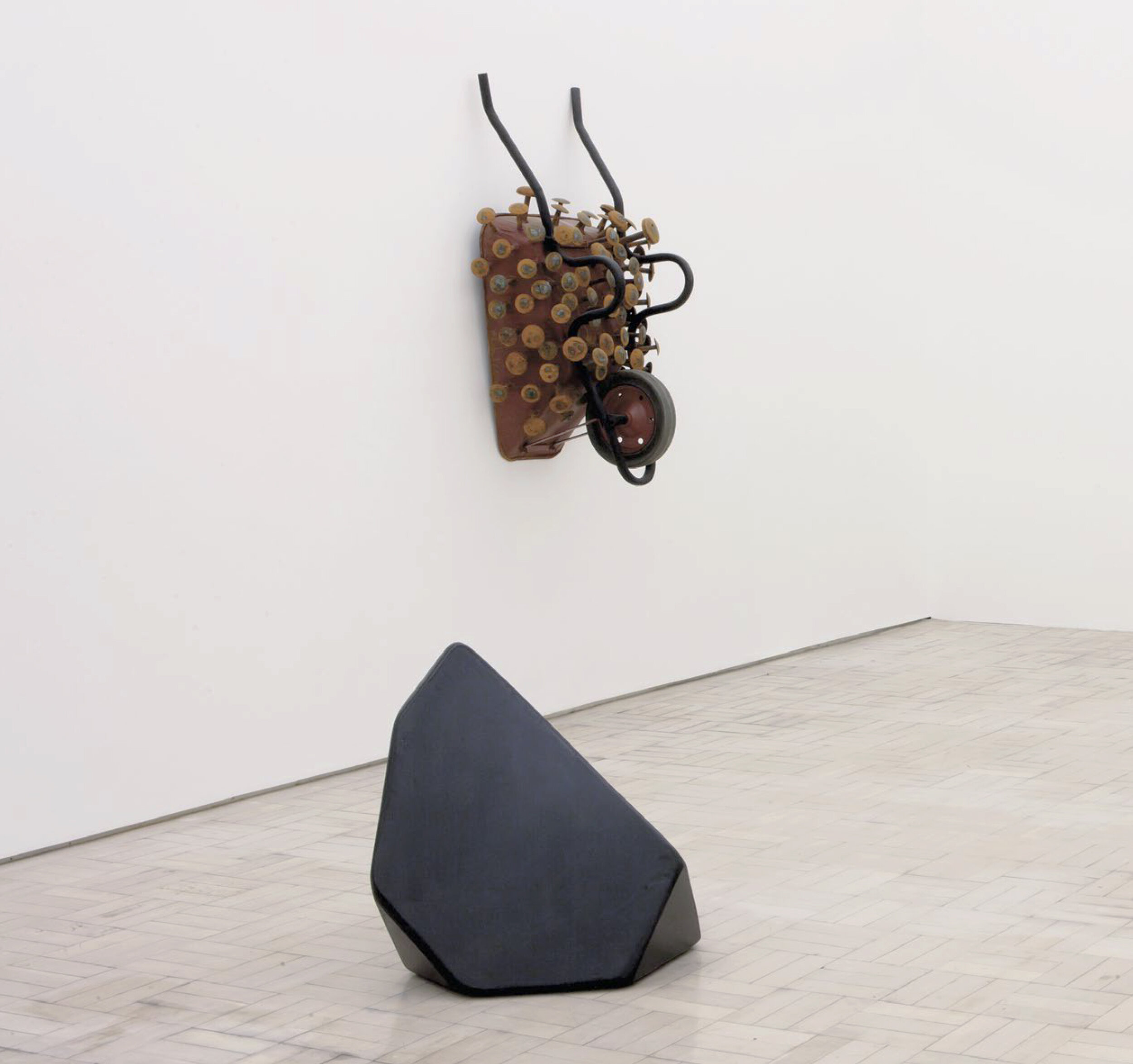

The Other Half
Solo exhibition
24 May – 7 July 2012
Stevenson, Cape Town
At the nexus of The Other Half is the shift from the mechanical processes of the 20th century to the sublimation of industry into service and information in the 21st century.
MacGarry writes:
My basic, animistic intent is to articulate and remake the products, objects and physical things I owned and experienced during my youth in the last century, [but] projecting, manufacturing and assembling these things for the second half of the 21st century - a time when I will be dead.
MacGarry's chief concern here, manifest across diverse media, is with the material reality of objects from the past envisaged for the second half of this century, when the number of lives on Earth will have increased dramatically. The objects of The Other Half are analogue - imagined, consumed, commissioned, assembled and designed. The process is the rationalisation of objects into commodities, coupled with the simultaneous standardisation of the industrial objects used to make them, and shadowed by the rationalisation of human beings themselves through coercion, consumerism and urbanisation into the kaleidoscopic carnival of contemporary advanced capitalism.
The centrepiece of the exhibition is the large-scale sculpture Faro RLV 3-10, an unmanned field artillery cannon (Remote Land Vehicle) of the Nigerian Federal Army in the year 2024, conceived, designed and manufactured by the artist, principally in mild steel. Informing the work is the idea that, in all probability, the United States will in our lifetime engage in military activities against the Federal Republic of Nigeria, under the rubric of ensuring security, peace and stability in the country and the region - at the same time actively securing a reliable source of scarce energy. Faro RLV 3-10 aims to manifest a mechanical, physical resistance to this imperial expansion from a possible future Nigerian state, which might one day build its own defence and military hardware rather than draining domestic GDP by importing such technology and consumables. The (fictional) history of the RLV 3-10 is that it was designed and manufactured by FARO™ (Nigerian Military Industries) in Abuja in 2024, and saw active service in peace-keeping missions to Sudan (2025) and in both US invasions of Nigeria - Operation Sovereign (2026) and Operation Permanent Liberty (2031).
The installation La Maison d'une Artiste is a future projection - embodying in equal parts lyrical humour and masculine critique - of the central narrative of Edmond de Goncourt's 1881 book of the same name. Constructed of laser-cut MDF, this angular housing pod is designed to provide shelter for a single human being. The unit is unadorned save for the very basic requirements of shelter: a single bed, a small print of Brueghel's Hunters in the Snow and a bolt-action rifle. Inside the structure is a tiny 52-note musical movement playing Handel's Water Music. De Goncourt's book provided great inspiration for JK Huysmans' decadent classic À rebours (1884), the story of a sophisticated young hyper-aesthete who, in an attempt to escape an unbearable loss of meaning, retired to the Paris suburbs to live a life of total isolation amid a collection of art and literature, artificial installations and sensory devices. This sculptural dwelling mimics Huysmans' dissolute dandy and his enactment of reality, becoming an avatar for his ambivalent achievement of a kind of Gnostic immortality, ironically at the expense of all that he valued in his humanity.
An underlying theme of the exhibition is MacGarry's ongoing critique of the relationship between China and postcolonial Africa. This is manifest in an architectural diorama of a fantastical, future African Union Headquarters in Addis Ababa in 2068. Alongside this sculpture will be new oil paintings in the artist's 1000 Suns series depicting the cities of Africa's near-future - principally based in nation-states with existing or newfound reserves of hydro-carbons, namely Maputo and Accra.
The exhibition will also see the launch of a new publication, Chocolate City, focusing on the once-substantial African diasporic merchant-class community in Guangzhou, People's Republic of China. In Guangzhou, a 10 square kilometre area was given the name 'Chocolate City' by local taxi drivers due to its large concentration of African migrants. According to official statistics, from 2003 the number of Africans in Guangzhou grew at 30 to 40% annually, and by 2008 there were approximately 100 000 people in the community. Today, following restrictions on visas coupled with raids by immigration agents supported by city police, the African population in Guangzhou is perhaps closer to 20 000 people. These hail chiefly from Nigeria, Guinea, Cameroon, Liberia, Togo, Benin and Mali, with Nigerians comprising the majority of the population. African merchants visit China to trade - to buy DVDs, textiles, shoes and clothing for resale in their home countries. Due to the restrictions of a 30-day visa, high travel costs and the need to remain in Guangzhou, many Africans are left with little choice but to overstay their visas. They are declared by Chinese authorities as 'triple illegal persons' - illegal to enter the country, illegal to reside in the country, illegal to work in the country. The Chocolate City publication presents an idiosyncratic and epistemological response to, and manipulation of, the given subject - questioning the inherent logic and assumptions of documentary photography and portraiture, and opening the frame to fiction, conjecture and recreation. The publication will be available in standard and limited editions.








